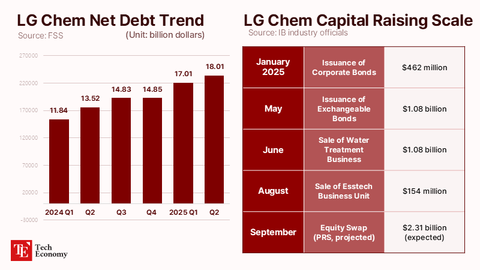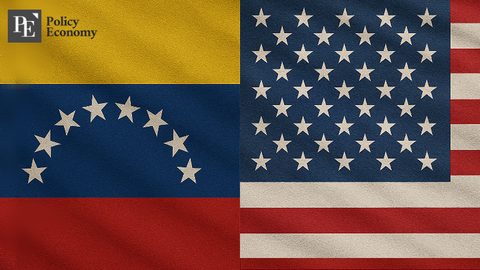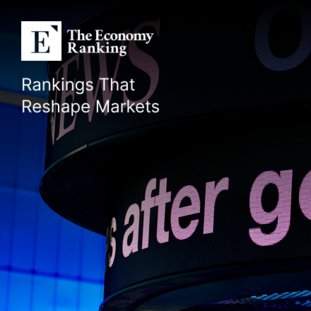The Quiet Collapse of Herd Immunity: How America’s Vaccine Wall Is Crumbling Introduction
Input
Modified
Childhood vaccination rates in the U.S. are falling Recent outbreaks across North America have exposed the dangers of under-vaccinated communities Misinformation and political polarization—exacerbated by figures like Robert F. Kennedy Jr.—are undermining public trust and weakening vaccine policies
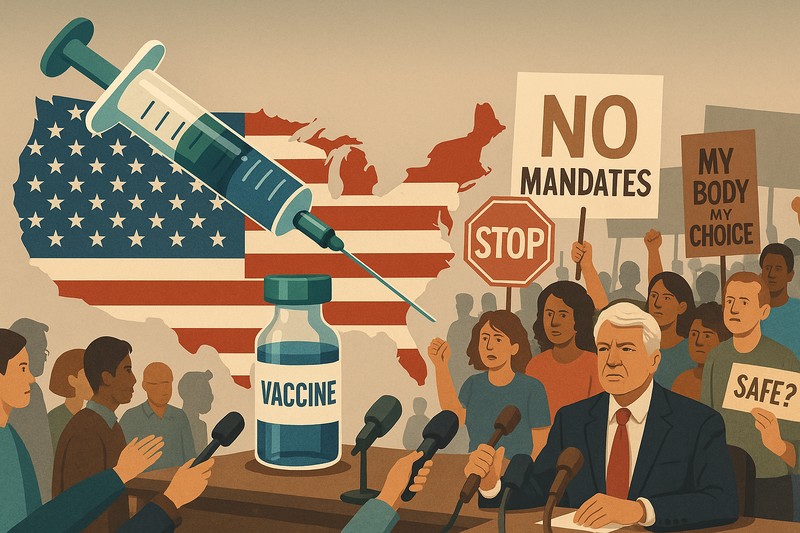
For over half a century, the United States led the world in eradicating some of the deadliest childhood diseases through rigorous vaccination campaigns. Measles, once a ubiquitous and lethal illness, was declared eliminated in the country by 2000—a milestone of modern public health success. But that victory is now teetering on the edge. Across the U.S., vaccination rates for measles and other routine childhood diseases are in a quiet but alarming decline, creating vulnerabilities that have already led to new outbreaks. The reasons are varied and complex: pandemic-related disruptions, a rising tide of anti-vaccine sentiment, political polarization, and lax state enforcement. The result is a fragile vaccination infrastructure unable to shield children from preventable diseases, especially in under-resourced or under-vaccinated communities. As childhood immunization becomes entangled in ideological battles and public distrust, America’s long-standing herd immunity is showing signs of collapse.
A Gradual Decline Hidden in the Data
The story of declining childhood vaccination rates in the U.S. didn’t begin with Robert F. Kennedy Jr., though his political rise has added urgency to the crisis. According to the Centers for Disease Control and Prevention (CDC), the percentage of U.S. kindergartners with full measles immunization dropped from approximately 95% before the COVID-19 pandemic to under 93% in the 2023–2024 school year. While this might seem like a modest decline, it crosses a critical threshold for measles, which requires 95% coverage to maintain herd immunity.
And measles isn’t alone. Immunization rates for polio, chickenpox, and whooping cough have all followed a similar downward trajectory. While national averages still hover above 90%, they obscure a dangerous truth: vast disparities exist at the state, county, and school levels. In hundreds of schools across the country, vaccination rates have fallen below 90%, with some dipping as low as 75%—a level that almost guarantees the spread of a virus if introduced.
The origins of this erosion trace back to the pandemic years, when many families skipped or delayed routine pediatric visits. Clinics closed, public health systems were strained, and health surveillance took a backseat to the emergency response to COVID-19. These logistical setbacks have left lingering effects. Many families have yet to catch up on missed immunizations or simply haven’t submitted updated records to schools. In districts like Minneapolis, where measles vaccination rates among kindergartners plummeted from 90% to 75%, the majority of families aren’t anti-vaccine—just caught in a systemic backlog.
Moreover, increasing numbers of families are formally opting out of vaccines altogether, citing religious, philosophical, or medical reasons. During the 2023–2024 school year, 3.3% of kindergartners had exemptions—up from 3% the year before. That 0.3% represents over 100,000 children, the size of a small city, now walking into classrooms without protection from measles and other preventable diseases.
The decline is geographically uneven but politically revealing. Exemption rates have risen dramatically in states that voted for Donald Trump in 2020, with only West Virginia bucking the trend. Yet the crisis isn’t limited to red states. Progressive-leaning regions like Oregon, Minnesota, and New Jersey have also seen increases in vaccine exemptions or drops in compliance. Schools in both rural communities and major cities—spanning political, socioeconomic, and demographic lines—are now part of a growing map of vulnerability.
Outbreaks in the Shadows of Success
As immunization rates fall, the consequences have already arrived. In 2024 and early 2025, measles outbreaks swept across North America, with more than 2,500 confirmed cases and four deaths across the U.S., Canada, and Mexico. The epicenter of the U.S. outbreak is Texas, which alone has reported 683 cases and two child deaths. New Mexico, Oklahoma, and Kansas have also recorded dozens of infections, marking the country’s worst measles resurgence since 2019—and its first measles deaths since 2015.
These outbreaks have largely affected under-vaccinated communities, particularly among Mennonite populations with historical skepticism toward modern medicine. A large Mennonite gathering in New Brunswick, Canada, was identified as the likely origin of the outbreak that eventually spread across borders into the U.S. and Mexico. In Mexico’s northern state of Chihuahua, measles cases skyrocketed from seven in 2024 to 786 in early 2025, with one adult fatality.
Health officials warn that the outbreaks are just the beginning. The World Health Organization (WHO) reported that measles cases in the Americas during the first three months of 2025 were 11 times higher than during the same period in 2024. Europe is seeing a similar surge, with cases increasing tenfold in 2024 compared to 2023. These developments expose the fragility of public health gains that were once considered permanent.
What’s most concerning is that outbreaks are no longer limited to isolated communities. CDC data reveal that thousands of schools now fall below the 90% vaccination threshold for measles. These “pockets of vulnerability,” as epidemiologists call them, can quickly ignite broader transmission. If the virus enters a school or neighborhood with insufficient immunity, it spreads rapidly—measles is among the most contagious diseases on Earth.
In 2022, a case of paralytic polio was recorded in an unvaccinated adult in New York. It served as a chilling reminder that other eradicated diseases could return if vigilance falters. The decline in vaccine compliance isn’t just a measles issue; it’s a potential prelude to a broader public health unraveling.
Some school districts have stepped up their response. In St. Paul, Minnesota, where vaccination rates rose from 91.4% to 93% amid the national decline, officials credit aggressive measures: multilingual outreach, on-site vaccinations, and monthly tracking. Yet even these successes highlight the extra effort required—and the gap left by districts without such resources.
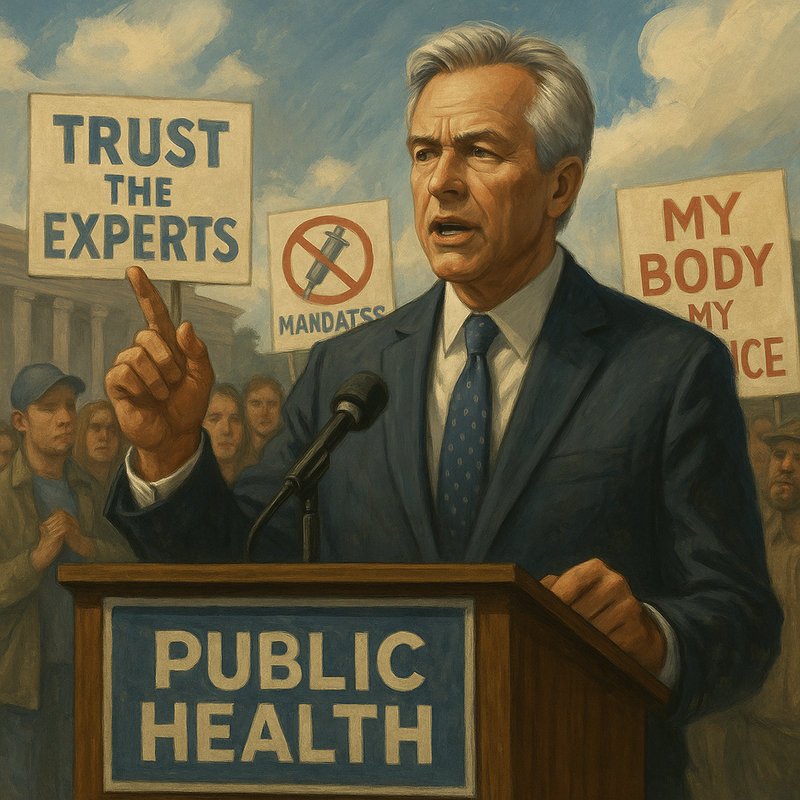
Politics, Misinformation, and the Erosion of Trust
As troubling as the numbers are, the political undercurrent may be even more worrisome. The appointment of Robert F. Kennedy Jr. as Secretary of Health and Human Services has injected anti-vaccine ideology into the federal apparatus of public health. Kennedy, a long-time vaccine skeptic, has repeatedly promoted debunked theories, including the false claim that vaccines cause autism and that the MMR (measles, mumps, rubella) vaccine contains “aborted fetus debris.”
In truth, the rubella component of the MMR vaccine is grown using cell lines derived from a single fetal sample in the 1960s, but no fetal tissue is present in the vaccine itself. Yet such misinformation resonates in a media ecosystem where conspiracy theories often travel farther than facts.
More disturbing still is Kennedy’s effort to downplay the severity of measles outbreaks and promote unproven treatments like cod liver oil and vitamin A supplements. While some nutritional interventions may assist in recovery in malnourished populations, they are not substitutes for vaccination. Kennedy’s promotion of these alternatives, combined with his dismantling of institutional safeguards—slashing CDC funding, firing public health officials, and introducing vague “new approval requirements” for vaccines—may further undermine America’s already strained public health response.
The data show a stark partisan divide. In a Gallup poll, the percentage of Republicans who consider childhood vaccinations “extremely important” fell from 52% in 2019 to just 26% in 2024. In contrast, Democratic support dropped only slightly, from 67% to 63%. Alarmingly, 31% of Republicans now believe that vaccines are more dangerous than the diseases they prevent, compared to just 5% of Democrats.
These beliefs have real-world consequences. State legislatures have increasingly introduced bills to weaken school vaccine mandates. While many have stalled or been vetoed, such as in West Virginia, others have passed, including a federal court order in Mississippi that allowed religious exemptions for the first time—prompting a measurable drop in vaccination rates.
Meanwhile, some states have taken action to tighten vaccine policy. Maine and Connecticut eliminated nonmedical exemptions during the pandemic, and both have seen vaccination rates rise. But they remain outliers. In most states, especially those with growing exemptions and lagging enforcement, policy has not kept pace with the threat.
As the country wrestles with this fractured landscape, the solution is not simply technological—it’s social. Rebuilding trust in vaccines and public health institutions will require more than new mandates. It will require empathy, communication, and targeted outreach to communities that feel alienated or misinformed.
The United States once stood as a global model for disease eradication through immunization. But that legacy is now in jeopardy. The decline in childhood vaccination rates—accelerated by pandemic disruptions, political polarization, and public distrust—has created fertile ground for the return of diseases like measles, polio, and whooping cough. These are not theoretical risks; they are unfolding in real time across schools, counties, and communities from Arizona to New Jersey.
While the national average may still appear reassuring, the real threat lies in the fractured immunity on the ground. In those under-vaccinated pockets, the protective shield that once surrounded the most vulnerable—infants, the immunocompromised, the elderly—has begun to crack. And in its place, outbreaks are rising.
This crisis did not start with Robert F. Kennedy Jr., but his elevation to a position of national influence has amplified its stakes. Misinformation, once relegated to fringe corners, now has the ear of federal agencies. The path forward must involve not only policy corrections but a recommitment to science, public health education, and equitable healthcare access.
America is at a crossroads: either re-fortify its public health achievements through collective action, or watch as old threats reclaim new victims. The measles virus, and others like it, are waiting. The question is whether we will act before they do.






